
Understanding the Engineering Significance of “Skid”
In engineering, the term “skid” has a significant and multifaceted meaning. It describes what happens when a moving object loses traction or control due to surface conditions, environmental factors, or how it interacts with the surface. Engineers must understand this concept because it impacts safety, efficiency, and performance across various industrial and everyday applications.
Importance of understanding skid in various engineering disciplines
Skid affects many engineering fields, including mechanical, civil, electrical, and chemical engineering. In mechanical engineering, for instance, it influences tire design and helps ensure safe handling on roads. Civil engineers account for skid when designing roads and pavements to prevent accidents. Electrical engineers factor it into the installation of heavy machinery, while chemical engineers address it in plant safety protocols.
Skid goes beyond these fields. It plays a role in aerospace, maritime, and sports equipment design. Engineers need a comprehensive understanding of skid because it supports safer and more efficient designs across disciplines.
Purpose of the article: To provide a comprehensive explanation of skid in engineering
This article aims to clarify the concept of skid in engineering. It explores its types, influencing factors, testing methods, prevention strategies, and real-world applications. By the end, readers will understand what skid means in engineering and why it matters. Whether you’re a student, a professional, or someone curious about engineering, this article offers insights that will expand your knowledge.
Types of Skids in Engineering
Definition and Explanation of Skid in Different Engineering Contexts
Mechanical Engineering:
- In mechanical engineering, “skid” refers to the unwanted sliding or slipping of a mechanical component or a vehicle. It can occur when the traction between the surface and the object is insufficient to prevent movement.
- Examples include the skidding of automobile tires on a wet road or the skidding of a conveyor belt due to excessive load.
Civil Engineering:
- In civil engineering, “skid” typically relates to skid resistance on road surfaces. It refers to the ability of a road surface to provide adequate grip for vehicles, ensuring they do not slide or lose control, especially during adverse weather conditions.
- Skid resistance is crucial for road safety, as it directly affects vehicle stability and braking efficiency.
Electrical Engineering:
- In electrical engineering, “skid” may not be a common term. However, it can be used metaphorically to describe the instability or malfunction of electrical equipment or circuits. For example, a power surge or electrical short circuit can cause a “skid” in electrical systems.
Chemical Engineering:
- In chemical engineering, “skid” can refer to a modular system or unit that is pre-designed and fabricated off-site, ready to be transported, and integrated into a larger industrial process. These skid-mounted units are efficient and convenient for chemical processes.
- Skid-mounted systems in chemical engineering offer advantages in terms of cost-effectiveness and rapid deployment.
Common Elements and Differences Among the Various Types of Skid
Common Elements:
- The common element among these different engineering contexts is the notion of unwanted movement, sliding, or slipping, which can have adverse consequences, such as accidents, reduced efficiency, or equipment damage.
- Skid resistance, whether on road surfaces, mechanical components, or industrial equipment, is critical for safety and performance.
Differences:
- The specific causes and consequences of skids vary between engineering disciplines. For instance, in mechanical engineering, skid often relates to friction and surface contact, while in civil engineering, it pertains to road safety and surface properties.
- Electrical and chemical engineering use the term more metaphorically, where “skid” describes a sudden, uncontrolled deviation from normal functioning.
Factors Influencing Skid
Skid, in the context of engineering, is influenced by a variety of factors that play pivotal roles in determining the level of traction and the potential for sliding or slipping. Understanding these factors is crucial for engineers and professionals in various fields. Here, we explore the key factors that influence skid in engineering:
Surface Material
How Different Materials Affect Skid Resistance
- Different surface materials exhibit varying levels of skid resistance. Some materials offer high traction, reducing the likelihood of skid, while others may be more slippery.
- Factors that impact skid resistance include the type of material (e.g., asphalt, concrete, gravel), the condition of the surface (e.g., smooth or rough), and any surface treatments applied.
Surface Roughness and Its Impact on Skid
- Surface roughness plays a crucial role in skid resistance. Rougher surfaces typically provide better traction due to increased contact with tires or footwear.
- Engineers often evaluate and measure surface roughness to ensure safety in applications such as road construction or industrial flooring.
Environmental Conditions
The Role of Weather (Rain, Snow, Ice) in Skid
- Weather conditions have a profound effect on skids. Rain, snow, and ice can significantly reduce traction, leading to an increased risk of skidding.
- Engineers must consider these factors when designing transportation systems, roadways, or pedestrian walkways to mitigate the impact of adverse weather.
Temperature and Its Effect on Skid
- Temperature can influence skid resistance. Extremely low temperatures can lead to icy surfaces, while high temperatures can soften road surfaces, affecting tire grip.
- Monitoring temperature variations and their impact on the skid is vital for maintaining safe conditions in engineering projects.
Vehicle or Equipment Factors
Tire or Wheel Properties
- The properties of tires or wheels, such as tread pattern, tire material, and inflation pressure, directly affect skid resistance.
- Engineers consider tire specifications and compatibility with surfaces to optimize skid resistance, particularly in automotive and industrial applications.
Weight Distribution
- The distribution of weight on a vehicle or equipment can affect the skid. An uneven distribution of weight can lead to loss of control and skidding.
- Engineers design vehicles and equipment with appropriate weight distribution to enhance stability and reduce skid risks.
Human Factors
Driver or Operator Behavior
- Skid incidents can often be attributed to driver or operator behavior. Aggressive acceleration, sudden braking, or inappropriate handling of equipment can induce skid.
- Training and education programs aim to improve driver or operator skills and reduce human-induced skid accidents.
Reaction Time
- The ability of drivers or operators to react promptly to changing road or operational conditions is critical in preventing skid-related accidents.
- Factors like attentiveness, fatigue, and familiarity with the equipment or vehicle can impact reaction time and, consequently, skid avoidance.
Skid Resistance Testing
Overview of methods and equipment used to measure skid resistance
In engineering, skid resistance testing plays a crucial role in assessing the safety and performance of various surfaces, materials, and structures. Several methods and specialized equipment are employed to measure skid resistance accurately. Here’s an overview of some common methods and tools:
- British Pendulum Tester: This widely used device measures the dynamic friction between a rubber slider and the tested surface. It provides a Pendulum Test Value (PTV) that indicates the skid resistance of the surface.
- Dynamic Friction Tester: Also known as the Drag Sled Test, this method involves dragging a weighted sled over the surface to determine the coefficient of friction. It simulates real-world conditions to assess skid resistance.
- Straightedge Test: A simple method that uses a straightedge and inclines to assess skid resistance qualitatively. It can be a quick way to identify potential issues.
- Friction Coefficient Measurement: This method involves measuring the friction coefficient between a standard tire and the surface material. It provides valuable data for road surface evaluation.
- Texture Depth Measurement: Texture depth gauges assess the depth of the surface irregularities. A higher texture depth often correlates with better skid resistance.
Importance of accurate skid resistance testing
Accurate skid resistance testing is crucial for several reasons:
- Safety: Ensuring that surfaces have adequate skid resistance is paramount for preventing accidents, especially on roads, runways, and walkways. Accurate testing helps identify potentially hazardous areas.
- Optimized Materials: Skid resistance testing assists in the selection of suitable materials and surface treatments for specific applications, enhancing the durability and performance of infrastructure.
- Regulatory Compliance: Many engineering projects are subject to regulatory requirements for skid resistance. Accurate testing helps meet these standards and avoid legal and liability issues.
- Maintenance Planning: By regularly assessing skid resistance, maintenance schedules can be optimized to address areas with declining skid resistance before accidents occur.
Real-world applications of testing results
Skid resistance testing has practical applications across various industries and engineering disciplines:
- Road Construction: Skid resistance testing on road surfaces helps ensure the safety of drivers by identifying areas with low skid resistance that may need resurfacing or treatment.
- Airport Runways: Accurate testing is critical for aviation safety. Runway surfaces must have sufficient skid resistance to prevent aircraft accidents during landing and takeoff.
- Industrial Flooring: Skid resistance testing is used to design industrial flooring to prevent slip and fall accidents in manufacturing and warehouse environments.
- Bridge Decks: Skid resistance testing on bridge decks helps maintain the safety of both vehicles and pedestrians.
- Pedestrian Walkways: In urban planning, testing results are used to design safe sidewalks and pedestrian areas, especially in areas prone to adverse weather conditions.
Skid Prevention and Control
Engineering Solutions to Prevent or Control Skid
Skidding in engineering can often be prevented or controlled through various engineering solutions. These measures are essential for enhancing safety and maintaining operational efficiency in different contexts. Here are three key approaches:
Surface Treatments:
Surface treatments involve modifying the road or working surface to increase its skid resistance. Common methods include:
- Adding texture to the surface: This can be achieved through techniques such as grooving or milling, which create a rougher texture for better tire traction.
- Application of friction-enhancing coatings: Specialized coatings or paints can be applied to surfaces to improve skid resistance. These coatings may contain abrasive materials or additives that enhance grip.
- Regular maintenance: Routine cleaning and removal of debris, oil, or other contaminants from surfaces can help maintain skid resistance over time.
Anti-Skid Materials:
- Using anti-skid materials is another effective approach to prevent skid incidents. These materials are designed to provide enhanced friction and reduce the risk of skidding. Examples include:
- Aggregate materials: Incorporating high-friction aggregates like crushed rock or bauxite into road surfaces can significantly improve skid resistance.
- Rubberized surfaces: Some areas, such as pedestrian crosswalks or bridge decks, can benefit from rubberized surfaces that offer superior traction.
- High-friction coatings: Specially formulated coatings, often containing epoxy or polyurethane, can be applied to various surfaces to enhance skid resistance.
Vehicle or Equipment Modifications:
- A skid can also be controlled by making adjustments to vehicles or equipment. These modifications may include:
- Anti-lock Braking Systems (ABS): ABS technology in vehicles helps prevent wheel lock-up during braking, reducing the likelihood of skidding.
- Traction control systems: Modern vehicles are often equipped with traction control systems that manage power distribution to wheels to prevent skidding.
- Load distribution: Ensuring that loads are distributed evenly on vehicles or equipment can help maintain balance and reduce the risk of skid during operation.
Importance of Maintenance in Preventing Skid Accidents
Maintenance plays a crucial role in preventing skid accidents. Without proper upkeep, even the best-designed skid prevention measures can lose their effectiveness over time. Key maintenance considerations include:
Regular Inspection:
- Routine inspections of road surfaces, equipment, and vehicles should be conducted to identify signs of wear and tear that may compromise skid resistance.
Prompt Repairs:
- Any damage or deterioration of skid-resistant surfaces should be promptly repaired to prevent accidents.
Cleaning and Debris Removal:
- Regular cleaning to remove debris, oil, or other contaminants from surfaces is essential to maintain skid resistance.
Calibration and Testing:
- Skid resistance testing equipment should be regularly calibrated and maintained to ensure accurate results.
Need a reliable partner?
Red River specializes in the design and manufacturing of pressure vessels. We also fabricate related items such as prefabricated spools and skid packages.
Reach Out to us today and experience the Red River difference. Where American Made and American Values come together, we care more.
FAQ: Engineering Significance of Skid
What is a skid in engineering terms, and why is it significant?
In engineering terms, a skid refers to a frame or platform that supports equipment or machinery, designed for easy transportation and installation. Skids are significant because they offer a modular approach to system design, allowing for pre-assembly, testing, and commissioning of equipment off-site, which reduces installation time, minimizes on-site labor costs, and enhances overall project efficiency.
How do skids contribute to the modular construction approach?
Skids are a cornerstone of modular construction, as they enable individual process units or systems to be engineered, constructed, and tested independently before being shipped to the site for quick integration. This approach significantly reduces construction timelines, improves quality control by fabricating in a controlled environment, and allows for flexibility in project design and execution.
What types of equipment are typically mounted on skids?
A wide range of equipment can be mounted on skids, including pumps, compressors, generators, HVAC units, pressure vessels, and process equipment like reactors and separators. Essentially, any equipment that benefits from pre-assembly and requires mobility within or between facilities can be skid-mounted.
How are skids designed to ensure stability and safety?
Skids are designed considering the weight distribution, vibration, and dynamic loads of the mounted equipment to ensure stability and safety during both transportation and operation. Engineers use structural analysis and adhere to industry standards to design skids that can withstand the operational stresses and environmental conditions they will face.
Can skid-mounted systems be customized for specific projects?
Yes, skid-mounted systems can be fully customized to meet the specific requirements of a project. This includes customizing the layout, size, material, and components of the skid to accommodate the equipment it supports, as well as integrating control systems, piping, and electrical connections as needed.
Related Blog Post
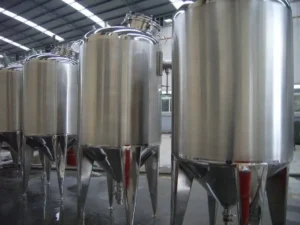
How a Glycol System Works
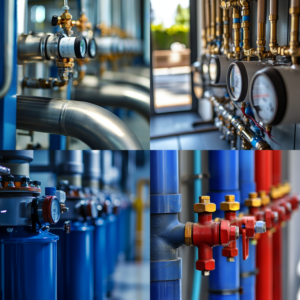
Ethylene Glycol Water: A Complete Heat Transfer Guide
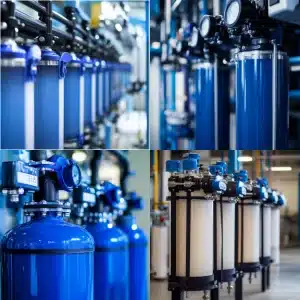
Water Filter Replacement
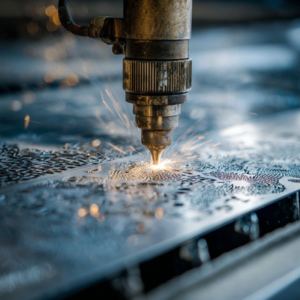
Why Use Stainless Steel Sheet Metal Fabrication?
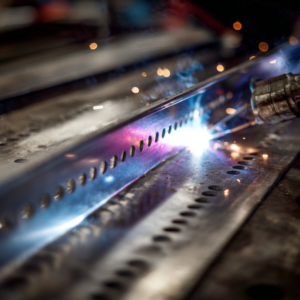
How Does Stainless Steel Sheet Metal Fabrication Work
About Author

